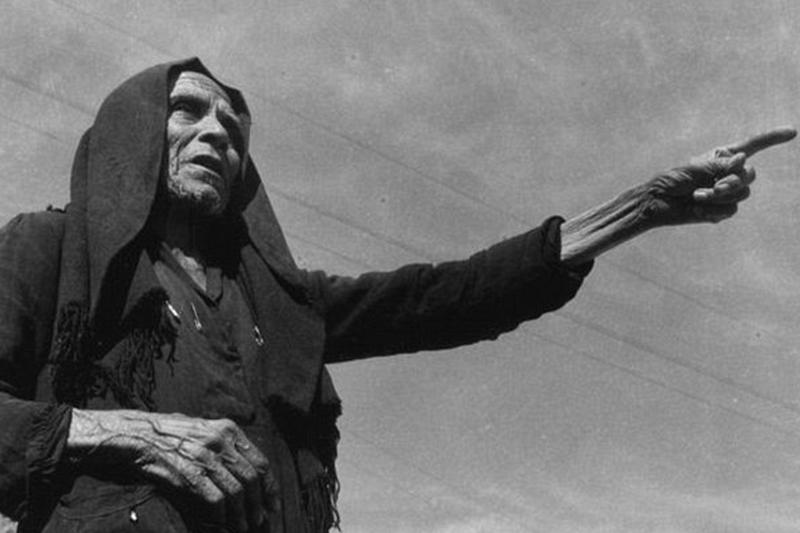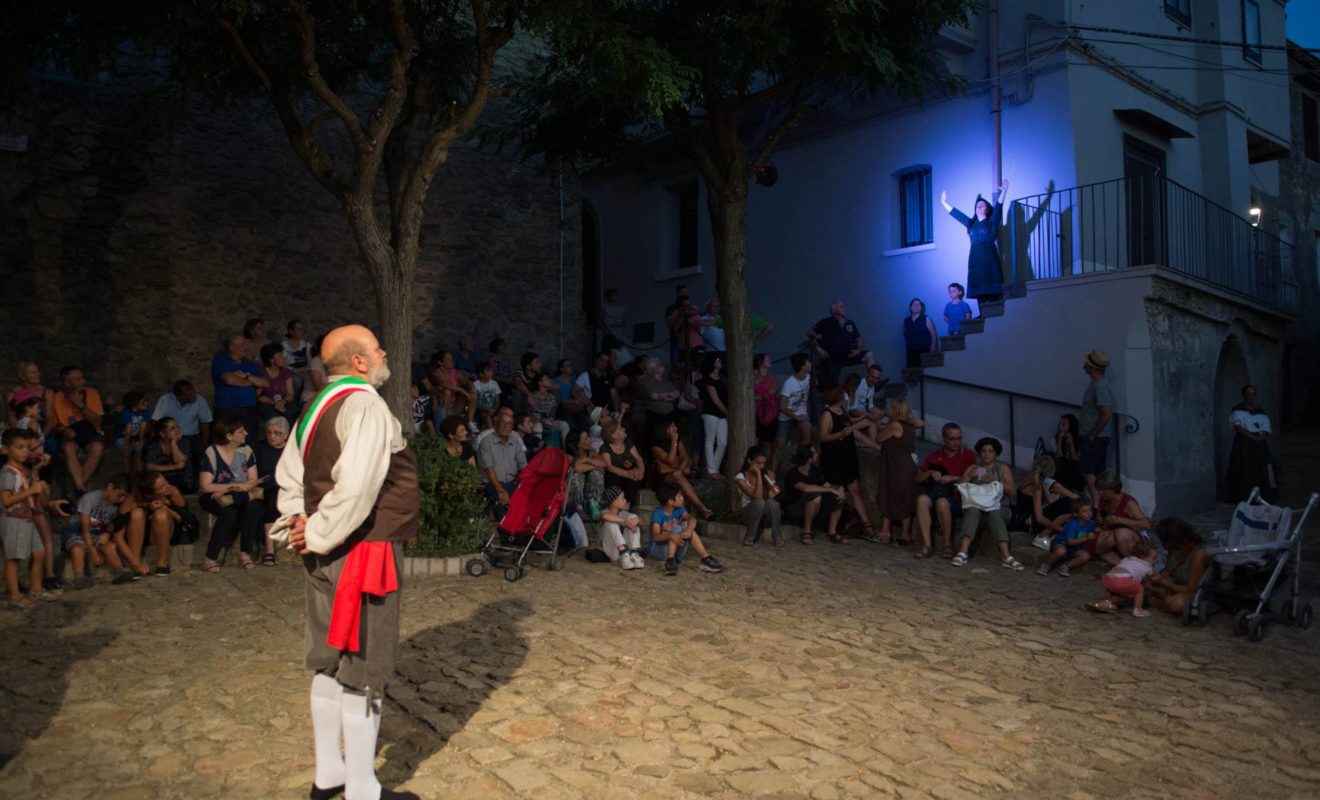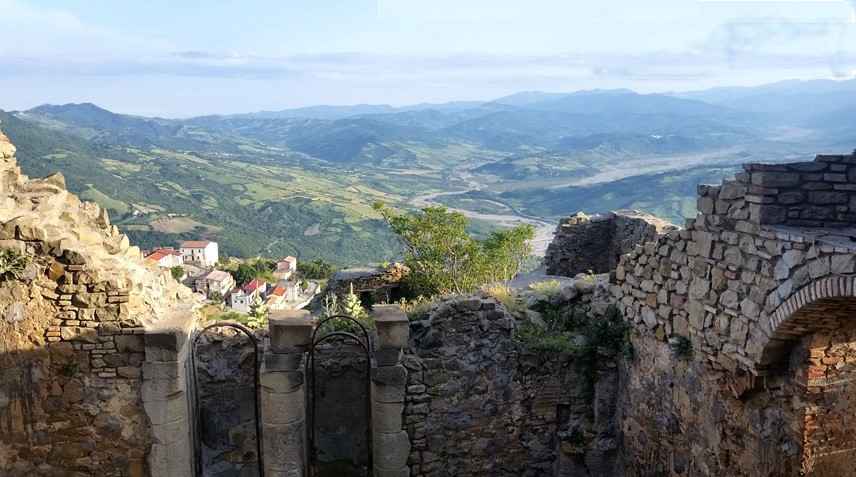




 It will happen to hear, at the pronunciation "Colobraro", that this town of the province of Matera is "unnameable", of those to ... avoid, a town that brings bad luck, in short! Colobraro, on the other hand, is a nice hamlet that has made its strong point out of this reputation by building a successful event around the "slander" entitled "One night's dream in that town", during which, ironically on the irreverent fame of the town, the visitor is guided along a fun but exciting, fascinating but lively path to discover the town.
It will happen to hear, at the pronunciation "Colobraro", that this town of the province of Matera is "unnameable", of those to ... avoid, a town that brings bad luck, in short! Colobraro, on the other hand, is a nice hamlet that has made its strong point out of this reputation by building a successful event around the "slander" entitled "One night's dream in that town", during which, ironically on the irreverent fame of the town, the visitor is guided along a fun but exciting, fascinating but lively path to discover the town.
Really an astounding view from Colobraro on Valsinni, the town of Isabella Morra, the Lucanian poet author of poignant verses, by which she was considered one of the most original and authentic voices of the female lyric of the XVI century murdered by the hand of her own brothers in the same castle where she was born.
The name seems to derive from the Latin "colubarium" which indicates a territory full of snakes, a definition attributed to the apparently bare landscape surrounding the town. The town of Colobraro was built around the monastery of the Basilian Monastery of Santa Maria di Cironofrio. The town was in fact an ancient Basilian center, which belonged to the Santa Maria di Cersosimo Abbey.
 Only a few ruins remain of the 13th century castle which was the home of numerous feudal lords who succeeded one another in the town history from the Sanseverino family to the Poderico family, and again from the Pignatelli to the Carafa family, up to the Donnaperna family.
Only a few ruins remain of the 13th century castle which was the home of numerous feudal lords who succeeded one another in the town history from the Sanseverino family to the Poderico family, and again from the Pignatelli to the Carafa family, up to the Donnaperna family.
But the story of Colobraro is linked over all, to two anecdotes that would explain his "unnamability". One of these dates back before the Second World War and would concern the affirmation of a man of the institutions of the time who, having to deny a specific episode, would have claimed: "If I am not telling the truth, may this chandelier fall". Apparently the chandelier really fell! Another version refers to the belief in the magical arts of some women from Colobraro.



An excellent opportunity is the path along the steep streets of the historic center entitled: "A night's dream in that country". The itinerant theatrical representation opens up to the eyes of the most superstitious visitor the beauty of a village, Colobraro (!), Which stands on a hill from which you can enjoy, especially with the magic of evening lighting, a romantic view over the valley of the Sinni river, until the Ionian Sea.
It all starts with the delivery of an amulet, so as not to make a mistake! Then the journey begins with a visit to the exhibitions "With the Eyes of Memory"; "The Peasant Civilization"; "Myth and Magic in 17th century Neapolitan painting". We then proceed to the historic center, between tales of "enchantments" and "masciare", along a fascinating and entertaining theatrical journey, at which end, the tasting of typical products and the sound of folk music will not turn off music and entertainment!
 And right at the end of this intense journey we reach the ruins of the town ancient castle. Between the alleys and the steps that climb up to the highest point of the small village, where the ancient castle stands, the inhabited center of Colobraro preserves some sacred buildings of mystical value
And right at the end of this intense journey we reach the ruins of the town ancient castle. Between the alleys and the steps that climb up to the highest point of the small village, where the ancient castle stands, the inhabited center of Colobraro preserves some sacred buildings of mystical value
The 12th century church of San Nicola is quite interesting, characterized by large pointed windows typical of the Aragonese era and by an interior with three naves with marble and wooden altars. Built in the 14th century and restored at the end of the 1700s, the chapel of the Icon adjacent to the church, preserves evident influences of oriental architecture.
Founded in the 16th century, the beautiful church of Saint'Antony of Padova also stands out with the adjoining convent. With a single nave, the stucco workmanship denotes a Baroque style. The church is also embellished with minor altars on the sides, numerous niches and decorative pilasters. The main altar is in polychrome marble with a small stone pulpit supported by corbels.
